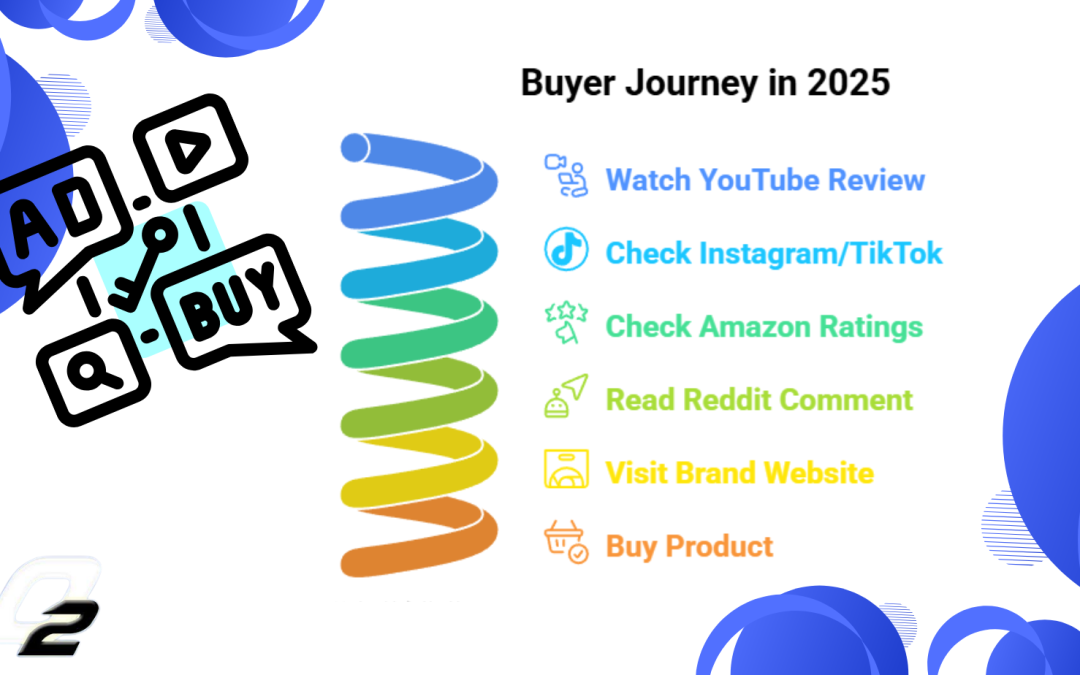
by Shashikanth Heerekar | Dec 11, 2025 | All Things about Marketing, Digital Marketing, SEO News, Technology
When I talk about “Search Everywhere Optimization,” I am simply talking about how people search today. Years ago, most users depended only on Google. But now, people don’t stay on one platform. They move from one place to another before making any decision.
This is why I believe Search Everywhere Optimization is not just a trend; it is the new reality of how buyers behave.
Let me explain this in a very simple and casual way, just how I explain it to my clients.
Why Search Everywhere Is Very Important
People don’t trust only one platform anymore.
Today, users follow a long journey before they buy anything.
They might start on Google, then move to others, or they might find it on any platform and then move to other platforms.
- YouTube
- Instagram
- TikTok
- Reddit
- Quora
- Amazon
- Product review sites
- Social media posts
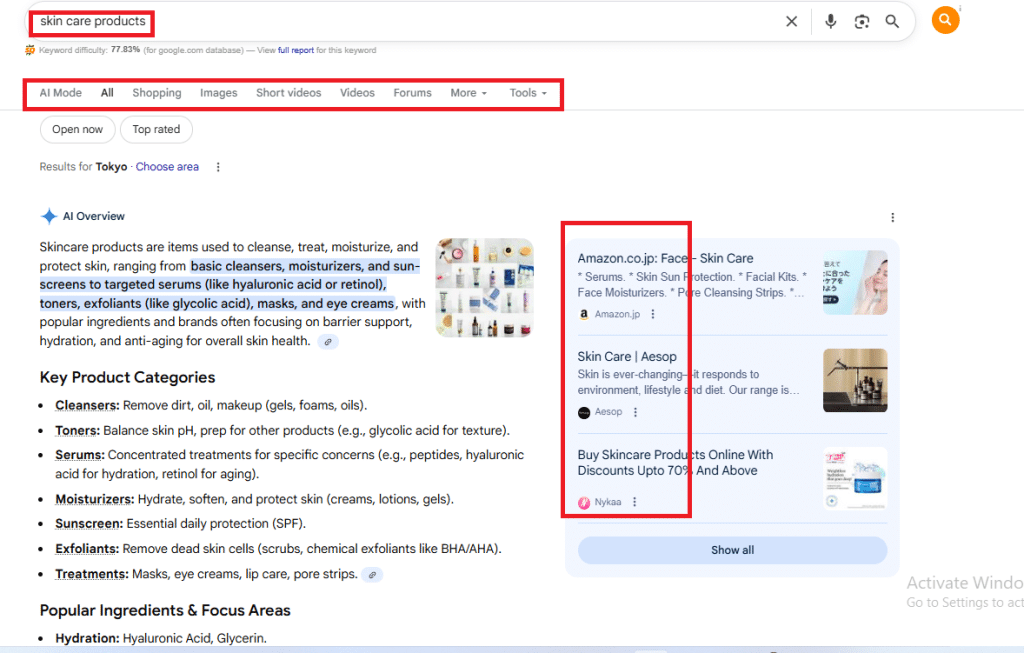
A buyer is not “searching once.”
A buyer is searching everywhere.
Let’s take a simple example:
Someone wants to buy a skincare product. For an instant I was scrolling YouTube last night, and somewhere in my mind I was also looking for skincare products. Suddenly, I found a video on YouTube Shorts related to skin care on that platform. I got interested and curious to know more about that product. So, I started switching to another platform where I can learn more about the product. Now I try to search for that product on every platform, like I will watch videos related to how to use it, check the reviews on forums, and check the rating, then I’ll visit the affiliate market and search for the product, and then I decide to purchase or not.
- First, they watch a YouTube review.
- Then they check Instagram Reels or TikTok videos.
- Following that, they check Amazon ratings.
- In sequence to the above, they read a Reddit comment.
- Only after all this do they visit the brand website.
- Then they buy.
Let’s look at the real-time examples below and how they did branding related to their product and also never left any platform marketing or branding their product; just have a look.
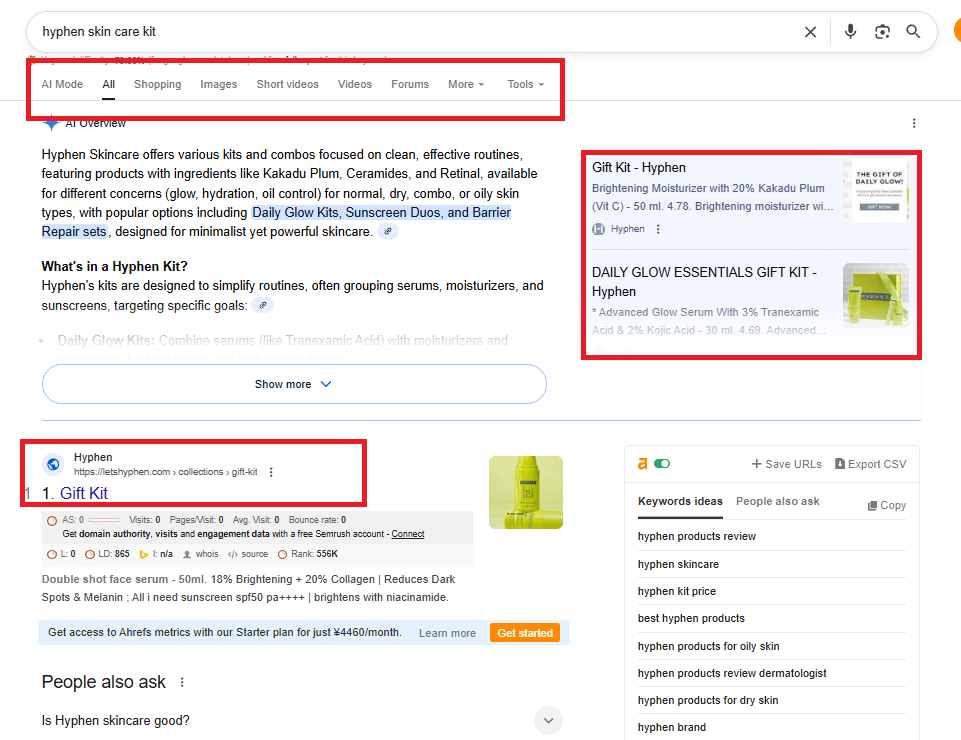
Video review for branding
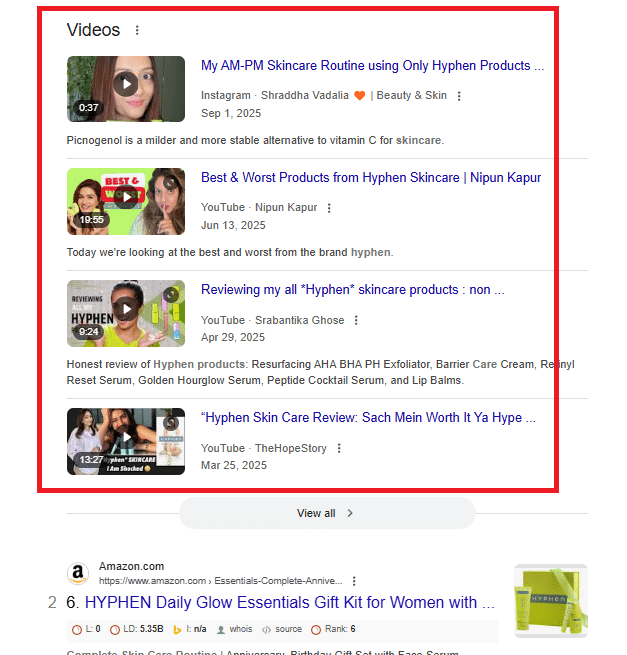
Selling this product on every affiliate platform makes it very convenient for the buyer.
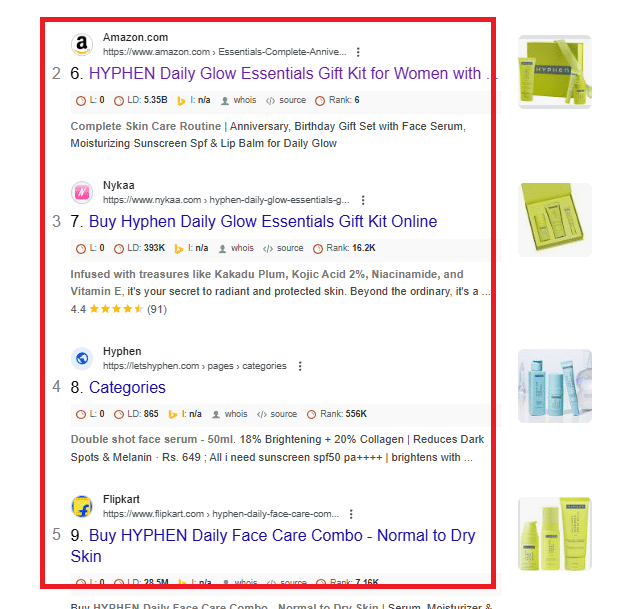
They have also had news articles related to the product and how strong they have built their branding.
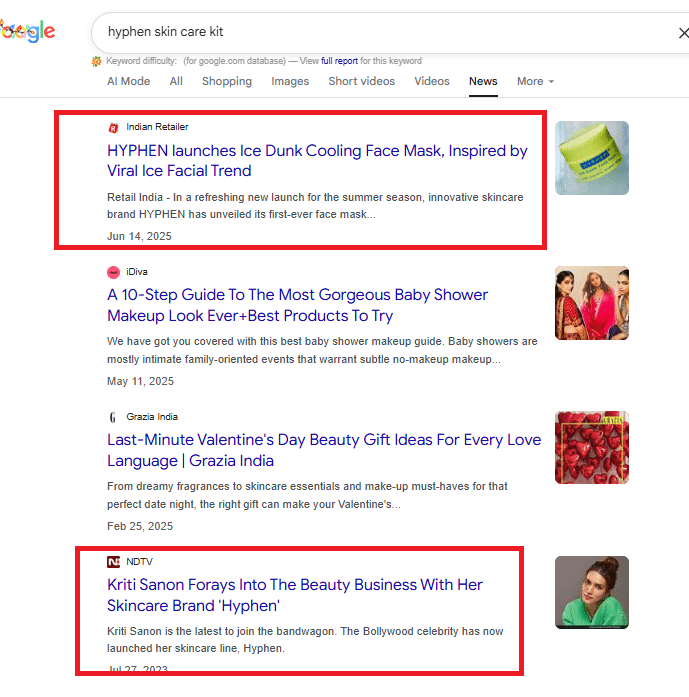
This is a real buyer journey in 2025.
Here are simple stats that prove this behavior:
| User Behavior |
Percentage |
| People who watch YouTube before buying |
68%+ |
| People who search social media for ideas |
55%+ |
| People who depend on Amazon reviews and also look for real photos |
84%+ |
| People who check forums like Reddit/Quora |
35%+ |
This is exactly why Search Everywhere Optimization is important.
If buyers are everywhere, I also need to make sure the brand appears everywhere.
To Whom Search Everywhere Optimization Is Important
I recommend this approach to almost every industry, but some need it more and also some not at the start; I recommend them to stick to SEO services before using these services.
1. E-commerce brands
People compare everything: reviews, videos, social posts, and prices.
2. Local businesses
They check Google Maps, Instagram photos, Facebook comments, and ratings.
3. Service-based companies
A user checks your website, your LinkedIn, your reviews, and your social presence.
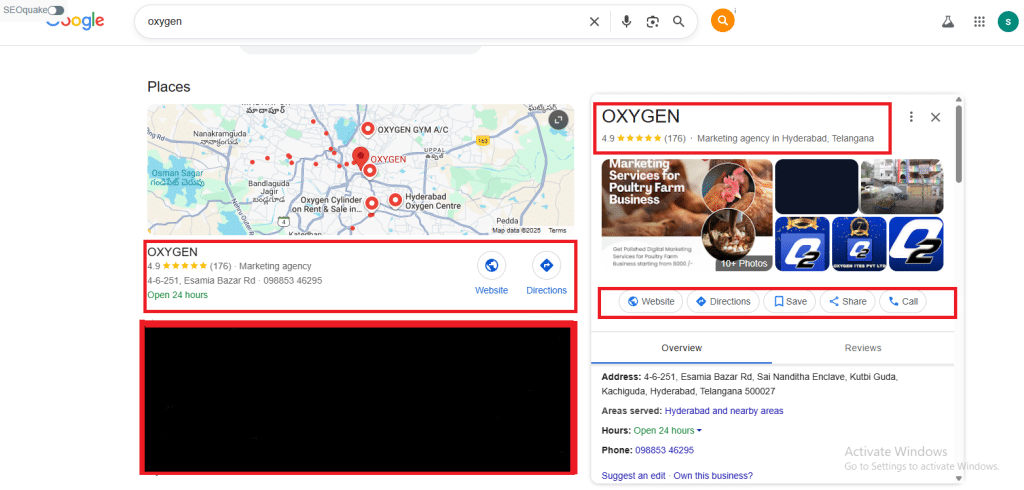
We can see in the above oxygen company how Google is providing reviews, ratings, and also how to visit the company.
4. Coaches, trainers, educators
A lot of discovery happens on YouTube Shorts, TikTok, and Instagram.
5. B2B companies
Buyers search across Google, LinkedIn, industry forums, and comparison sites.
In short, if your customers search on multiple platforms, then Search Everywhere Optimization is important for you.
Why Google SEO Alone Is Not Enough
I work in SEO, so I know how important Google is.
But the truth is very simple:
Google is only one part of the buyer’s journey now.
Let’s say someone is searching for a laptop.
They don’t just read one Google blog and buy.
They watch videos, check Reddit discussions, read Amazon reviews, and look at user feedback everywhere.
If your brand appears only on Google, you miss the entire journey where decisions are actually happening.
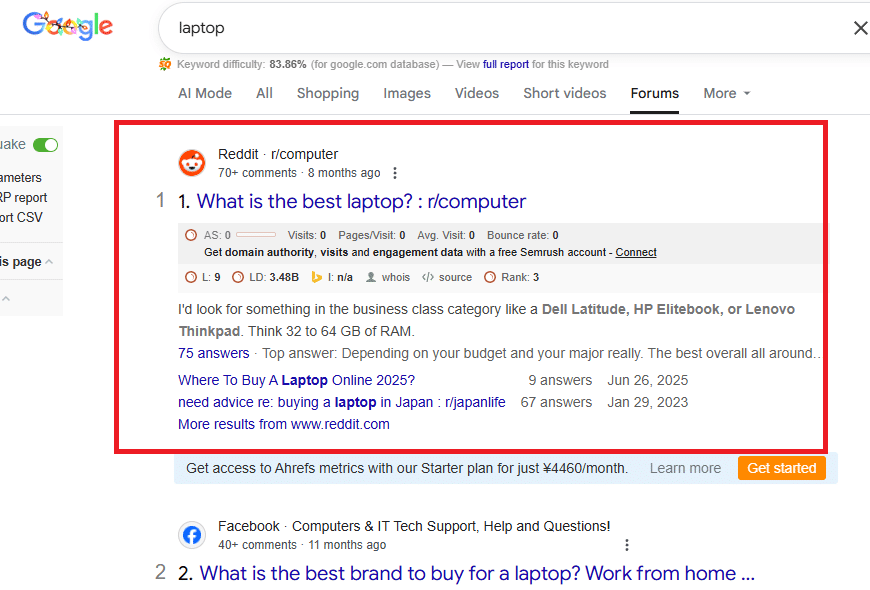
Difference Between SEO and Search Everywhere Optimization
I explain this difference to my clients using a simple table:
| Feature |
Traditional SEO |
Search Everywhere Optimization |
| Focus |
Only Google |
All platforms customers use |
| Content Type |
Blogs & web pages |
Videos, shorts, posts, reviews, forums |
| Journey |
Straight line |
Multi-step, multi-platform |
| Buyer Mindset |
“Search on Google” |
“Search everywhere before trust” |
| Visibility |
One place |
Every place that matters |
A very simple way to understand:
SEO is one channel. Search Everywhere is the full buyer journey.
Is Traditional SEO Dead?
No, traditional SEO is never going to die.
But it is no longer enough by itself.
Here’s what I usually tell people:
✔ SEO is still important
✔ Google is still the biggest search engine
✔ But people don’t stop at Google anymore
So SEO is not dead; it has simply grown into something bigger.
Conclusion
Search Everywhere Optimization is not a complicated idea. It simply matches the way people search today. Buyers move from Google to YouTube to Instagram to Reddit to Amazon and then to your website.
If you want trust, visibility, and actual conversions, you need to be present everywhere your buyer goes, not just on Google.
This is how the real buyer journey works now, and this is why I strongly believe Search Everywhere Optimization is the future of digital visibility.
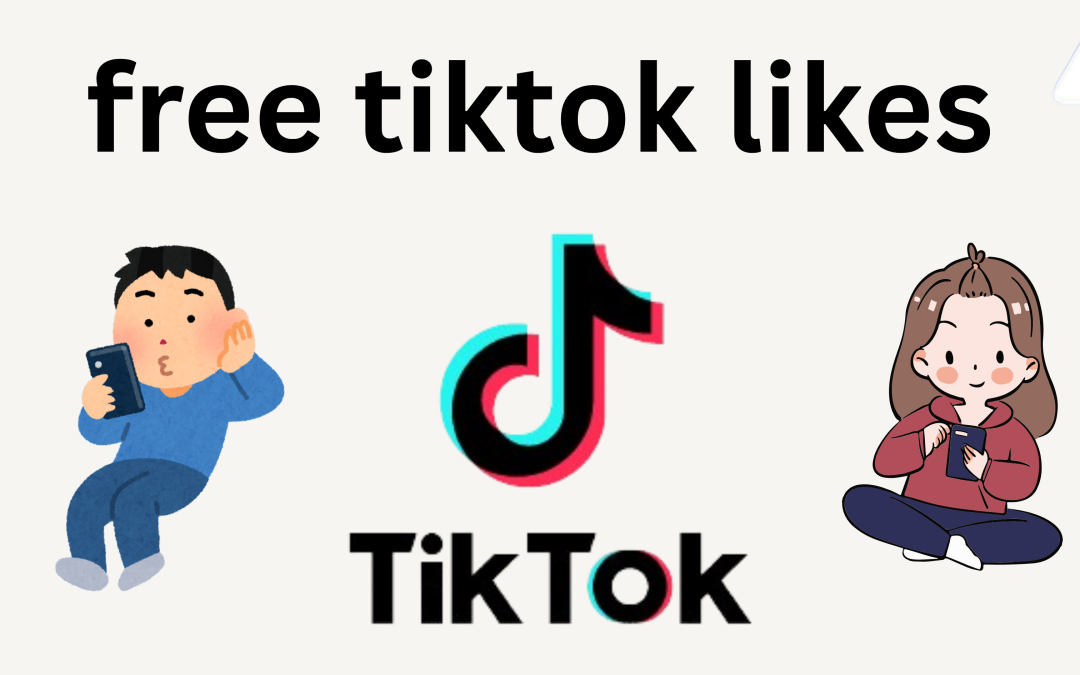
by Shashikanth Heerekar | Oct 11, 2025 | Artificial intelligence, Technology
Explore proven methods to boost your TikTok engagement, maximize likes, and make your videos stand out in today’s trending algorithm.
Get Free TikTok Likes in 2025 and Grow Your W—everyone
Let’s be honest, everyone loves seeing those little hearts pop up on TikTok. Whether you’re posting dance videos, funny clips, or sharing business tips, TikTok likes are the fuel that pushes your content into the spotlight. But here’s the good news: you don’t need to spend a rupee to make it happen. In 2025, there are smarter, free ways to boost engagement, get free TikTok likes, and grow your profile (and even your website) without using spammy tricks or fake bots.
NAVIGATE QUICKLY
- The Real Value of TikTok Likes
- Common Mistakes When Chasing Likes
- 4 Proven Steps to Get Free TikTok Likes
- From Free Likes to Real Growth
- Wegic: Turn Followers Into Long-Term Value
Create Your Website Effortlessly, Chat by Chat
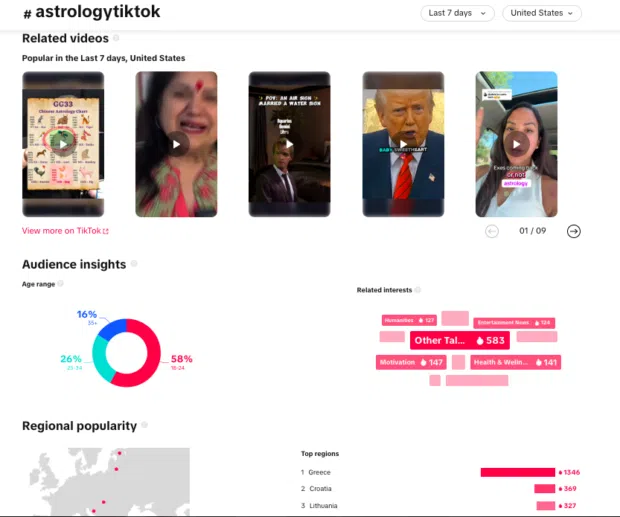
If you’re serious about turning your TikTok fame into something bigger like a business or blog, you’ll love Wegic. It’s an AI-powered platform that helps you create your website in minutes. No coding, no stress—just chat, customize, and launch. So when your TikTok free likes start rolling in, you’ll already have a professional site ready to welcome new followers.
💖 The Real Value of TikTok Likes
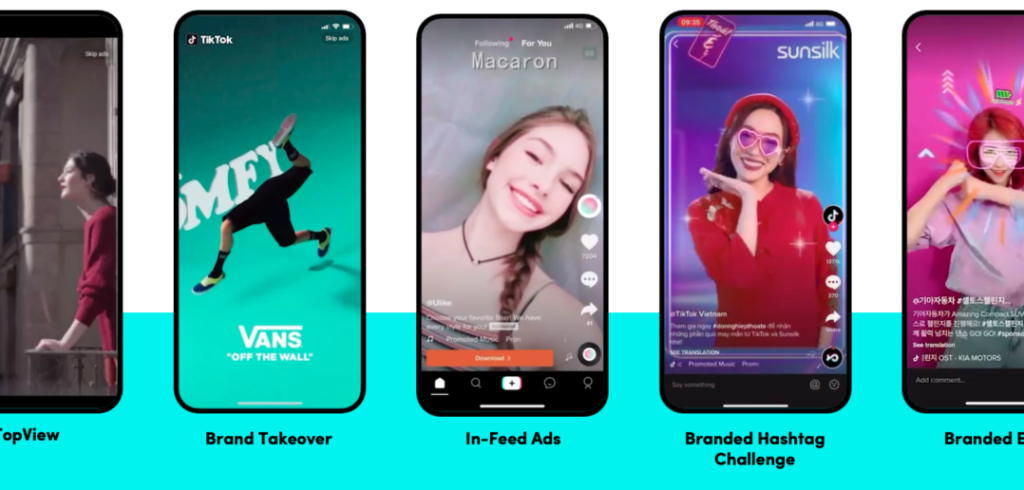
appreciations as digital currency. When people double-tap your video, they’re not just showing appreciation they’re signaling to TikTok’s algorithm that your content is worth promoting. More likes on TikTok often mean more visibility, which brings in even more free likes and views.
Sure, you might be tempted to use a free TikTok likes generator or sites like Countik and Famety for free likes, followers, views, and comments. And while those can give you a quick boost, the real magic happens when your content connects with viewers. Because once TikTok’s algorithm notices genuine engagement, your videos can go viral naturally.
⚠️ Common Mistakes When Chasing Likes (and Why They Fail)
Let’s face it we’ve all made these mistakes before. But if you want lasting growth, here’s what to avoid:
❌ Buying Likes
Buying likes might sound easy, but TikTok’s algorithm is smarter than that. Using TikTok like a free or freer service TikTok likes tools with fake accounts can actually hurt your reach. Stick with authentic methods to get free likes on TikTok your credibility will thank you.
❌ Copy-Paste Trending Content
Trends come and go fast. If you just copy what everyone else is doing, your content gets lost in the crowd. Always put your personal twist on trends that’s how you stand out and earn genuine TikTok video likes.
❌ Ignoring Video Quality
Blurry videos or poor sound are a big no. Invest in good lighting, use your phone’s back camera, and add captions. Quality is what keeps viewers watching and those extra seconds often turn into free TikTok likes.
❌ Forgetting Engagement
Don’t just post and disappear. When someone comments, reply. Ask questions, duet with fans, and join conversations. That’s how you turn 50 free TikTok likes into thousands of loyal followers.
🚀 Proven Steps to Get Free TikTok Likes
Now that we know what not to do, let’s focus on what works. These four steps can help you attract free likes on TikTok without buying or begging.
Step 1: Know Your Audience
Start by figuring out who’s watching. Are your followers into comedy, beauty, or business?To determine when your audience is most engaged, use TikTok statistics.. Posting at the right time can easily double your TikTok likes for free. Tools like Countik or Risekarma free TikTok likes can help track your engagement per like.
Step 2: Ride Trends Like They’re Your Own Twist
Jump on trends, but make them yours. Don’t just copy-paste and remix! Use hashtags like #tiktoklikesfree or #tiktoklikesgenerator, but add your humor, story, or brand voice. Viewers love authenticity, and TikTok rewards originality with more free likes TikTok.
Step 3: Create Scroll-Stopping Quality
TikTok is a fast-scroll platform; you only have two seconds to hook viewers. Start with strong visuals, catchy sounds, and a surprise element. Free editing tools like CapCut or Canva can make your videos look polished and professional, boosting your TikTok video likes for free.
Step 4: Engage and Build Community
Engagement is everything. Reply to comments, collaborate with small creators, and try like-for-like challenges. When your audience feels seen, they’ll keep liking, sharing, and commenting—no TikTok likes hack required.
🌱 From Free Likes to Real Growth
Getting 1000 free TikTok likes is fun, but what next? Use that momentum to build your personal brand. Link your TikTok to your Wegic website and let fans learn more about you, your products, or your services.
Avoid fake tools that promise 1 million free likes on TikTok. Instead, focus on creating real value. Because once your followers trust you, free likes and views start flowing naturally—no generator needed.
🌍 Wegic: Turn Followers Into Long-Term Value
Here’s the secret to turning viral videos into business success—conversion. Platforms like Wegic help creators turn those free TikTok likes into website traffic, leads, and customers. In just a few chats, you can build web pages that sync with your TikTok profile and showcase your best content.
So, when your audience grows, your online presence grows right along with it.
Conclusion – From Likes to Legacy
Getting free TikTok likes is great, but the real goal is to build something lasting. Create videos that make people feel something, engage genuinely, and keep showing up with fresh ideas.Both your audience and the algorithm adore consistency.
If you’re ready to turn your TikTok likes into long-term growth, like Wegic. It’s more than a website builder—it’s your bridge from viral moments to digital, like Wegic.
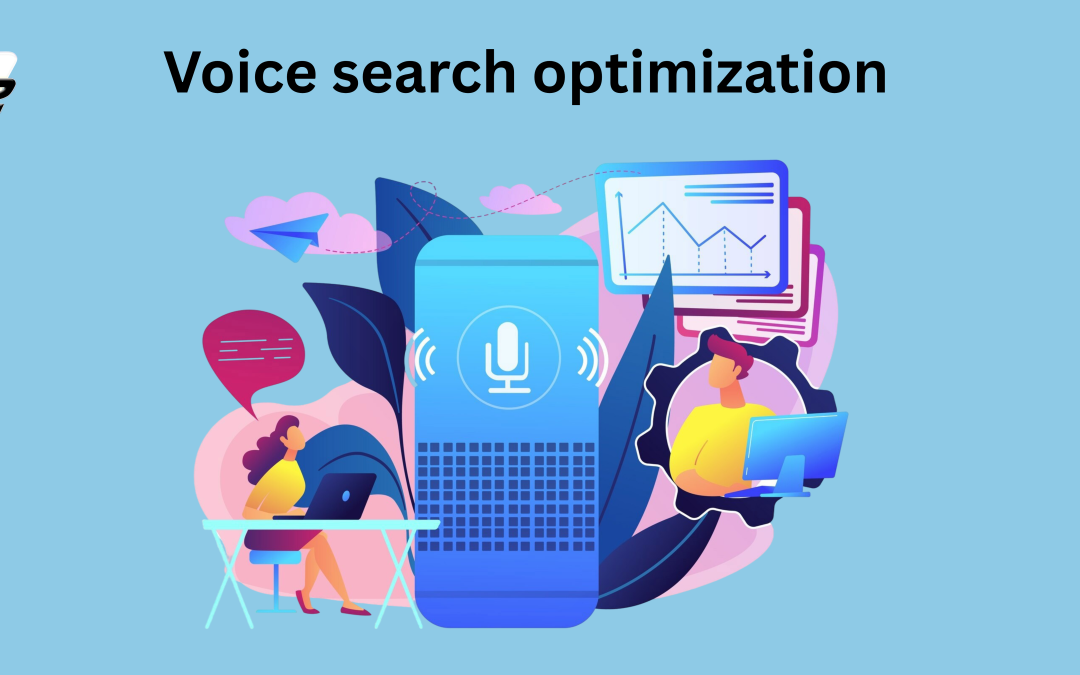
by Shashikanth Heerekar | Oct 11, 2025 | All Things about Marketing, Artificial intelligence, Digital Marketing, SEO News, Technology
Learn how voice search optimization can boost your website traffic and visibility. Discover strategies for local SEO, mobile optimization, and featured snippets to stay ahead in digital marketing.
How To Use Voice Search Optimization To Get More Traffic
I believe the key to driving more traffic with voice search is speaking your audience’s language. Voice searches are conversational and often phrased as questions, like “What are the best coffee shops near me?” rather than short keywords. By writing content that mirrors this natural speech, you increase the chances of being discovered.
Targeting local searches is equally important. Most voice searches have local intent, so keeping your business’s name, address, and phone number consistent across Google Business Profile and directories helps attract nearby customers. Including location-specific phrases naturally within your content also boosts visibility.
I also focus on mobile optimization, as most voice searches occur on smartphones. Fast-loading, responsive websites with clear navigation enhance user experience and improve rankings. Featured snippets are another goldmine: concise, direct answers make it more likely that voice assistants will read your content aloud.
Finally, I constantly analyze and tweak my strategy. Tracking which conversational keywords drive traffic allows me to refine my content and stay ahead. Combining conversational content, long-tail keywords, local focus, mobile optimization, and snippet targeting ensures I get more relevant traffic through voice search.
What is voice search optimization?
Voice search optimization is the process of tailoring your digital content to align with voice-based search queries. Unlike traditional text searches, voice searches are more conversational and often longer. For instance, a user might say, “What are the best Italian restaurants near me?” instead of typing “best Italian restaurants.” Recognizing this shift is crucial for businesses aiming to enhance their online visibility.
How does voice search work?
Voice search operates through voice recognition technology, which converts spoken words into text. This text is then processed by search engines to provide relevant results. The accuracy and efficiency of voice search have improved significantly with advancements in artificial intelligence and natural language processing.
Why optimize for voice search?
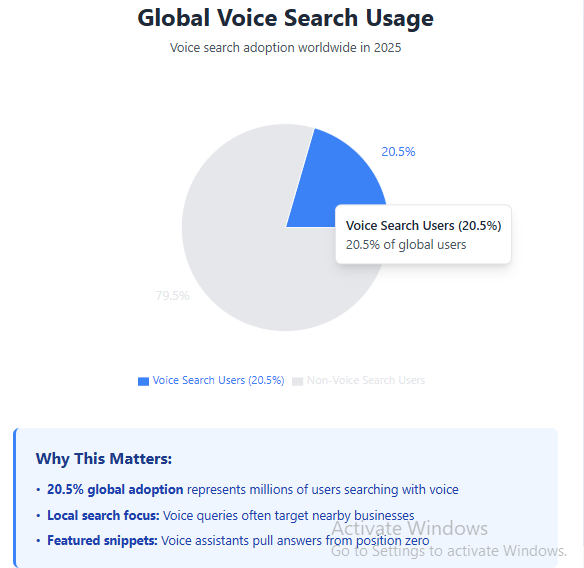
Global Voice search Optimization
Optimizing for voice search is becoming increasingly important in digital marketing for several reasons:
- Increased Usage: As of 2025, approximately 20.5% of people globally use voice search, indicating a growing trend towards voice-based queries.
- Local Search Relevance: Voice searches often have local intent, with users seeking nearby businesses or services.
- Featured Snippets: Voice assistants frequently pull answers from featured snippets, making it essential for businesses to optimize their content for these positions.
Voice Search Statistics 2025 (Key Highlights)
- Around 20.5% of people worldwide use voice search.
- Around 8.4 billion voice assistants are expected to be in use globally.
- In the United States, 153.5 million people are expected to use voice assistants.
- Siri has 86.5 million users in the United States.
- Approximately 27% of people use voice search on their mobile devices.
- In the U.S., 38.8 million people (13.6% of the population) use smart speakers for shopping-related activities.
- “Near me” and local searches make up 76% of voice searches and are expected to grow as more people use voice search to find local businesses.
How to optimize for voice search
Use a conversational tone
When creating content, adopt a natural, conversational tone. This approach mirrors the way people speak, making it more likely that your content will match voice search queries. For example, instead of stating, “Our restaurant offers a variety of Italian dishes,” say, “What Italian dishes do you offer?”
Include more long-tail keywords
Voice searches tend to be longer and more specific. Incorporating long-tail keywords that reflect natural language can improve your chances of appearing in voice search results. For instance, instead of targeting “Italian restaurant,” aim for “best Italian restaurant with outdoor seating in downtown.”
Target local searches
Since many voice searches are location-based, it’s vital to optimize your content for local SEO. Ensure your business’s name, address, and phone number (NAP) are consistent across all platforms. Additionally, include location-specific keywords in your content to attract local customers.
Optimize your site for mobile search.
Mobile devices account for a sizable percentage of voice searches. Therefore, ensuring your website is mobile-friendly is essential. This includes having a responsive design, fast loading times, and easy navigation.
Earn featured snippets
Featured snippets are concise answers displayed at the top of search results. To increase your chances of being featured, provide clear and direct answers to common questions related to your business. Use structured data to help search engines understand your content better.
Flowchart: Steps to Optimize for Voice Search
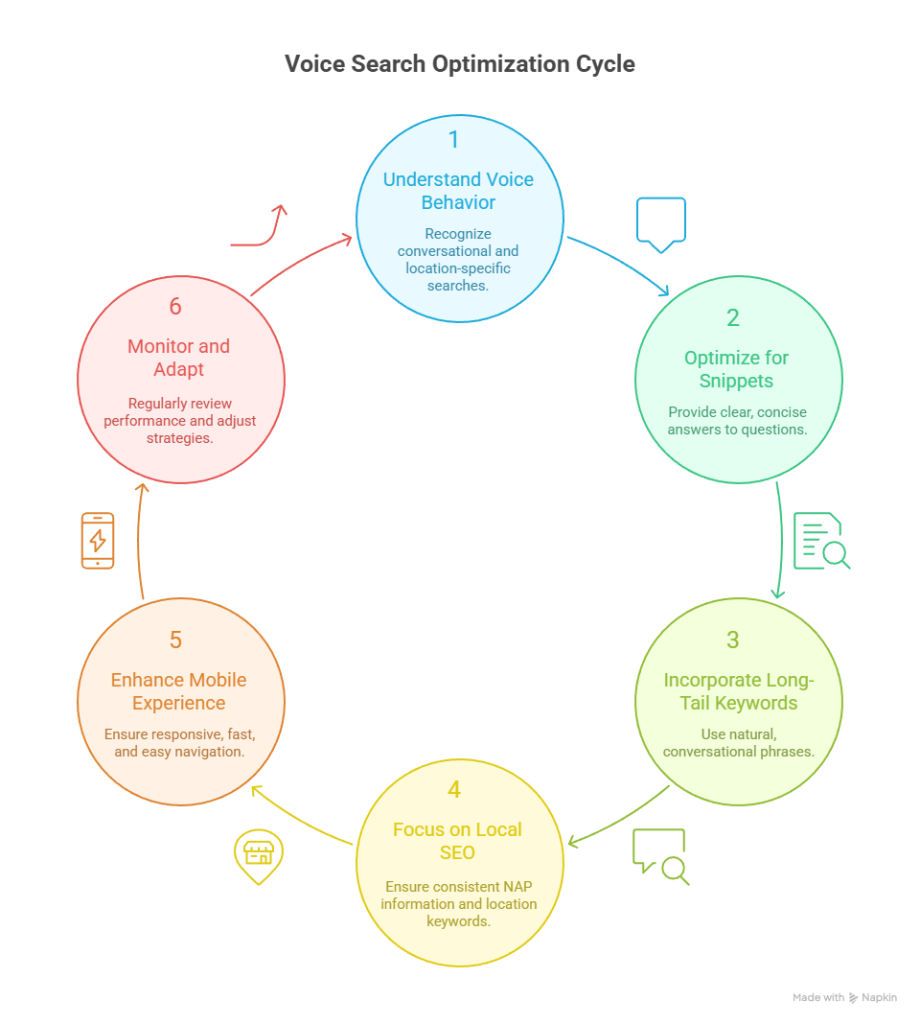
Flowchart: Steps to Optimize for Voice Search – visual selection
- Understand Voice Search Behavior: Recognize that voice searches are conversational and often location-specific.
- Optimize Content for Featured Snippets: Provide clear, concise answers to common questions.
- Incorporate Long-Tail Keywords: Use natural, conversational phrases that reflect how people speak.
- Focus on Local SEO: Ensure your business’s NAP information is consistent and includes location-specific keywords.
- Enhance Mobile User Experience: Ensure your website is responsive, fast, and easy to navigate.
- Monitor and Adapt: Regularly review your voice search performance and make necessary adjustments.
How Do I Optimize My Business for Voice Search?
To effectively optimize your business for voice search, it’s essential to focus on several key areas:
- Claim and Optimize Your Google Business Profile: Ensure your business information is accurate and up-to-date. This includes your name, address, phone number, business hours, and services offered. A well-maintained profile enhances your visibility in local voice search results.
- Incorporate Conversational Keywords: Voice searches are typically more conversational and longer than typed queries. For instance, instead of targeting “best pizza,” aim for “What are the best pizza places near me?” Integrate these natural language phrases into your content to align with voice search patterns.
- Focus on Local SEO: Many voice searches have local intent. Ensure your website includes location-specific keywords and that your business is listed in local directories. This helps in appearing in “near me” voice search results.
- Enhance Mobile User Experience: Since a significant portion of voice searches occurs on mobile devices, ensure your website is mobile-friendly. This includes having a responsive design, fast loading times, and easy navigation.
- Utilize Structured Data: Implementing schema markup helps search engines understand your content better, increasing the chances of your business being featured in voice search results.
By focusing on these areas, you can improve your business’s visibility and ranking in voice search results.
Is Voice Searching the Future of SEO?
Yes, voice searching is increasingly becoming a significant aspect of SEO. As of 2025, approximately 20.5% of internet users globally utilize voice search, with a notable increase in daily usage.This trend indicates a shift in user behavior towards more natural and conversational search methods.
The rise of smart speakers, virtual assistants, and mobile devices has contributed to this change. With more users relying on voice commands for information retrieval, businesses must adapt their SEO strategies to accommodate this shift.
Optimizing for voice search involves focusing on natural language processing, long-tail keywords, and local SEO. By aligning your content with how users speak, you enhance your chances of appearing in voice search results, thereby improving your SEO performance.
How Do You Rank on Voice Search?
Ranking on voice search requires a strategic approach that includes the following steps:
- Target Featured Snippets: Voice assistants often pull information from featured snippets. To increase your chances of being featured, provide clear and concise answers to common questions related to your business.
- -based voice-based-based Optimize for Local Intent: Many voice searches have local intent. Ensure your content includes location-specific keywords and that your business is voice-based and listed in local directories to appear in “near me” voice search results.
- Improve Website Performance: A fast-loading, mobile-friendly website enhances user-based voice experience and is favored by search engines, improving your chances of ranking in voice search results.
- Use Structured Data: Implementing schema markup helps search engines understand your content better, increasing the likelihood of your business being featured in voice search results.
- Monitor and Adapt: Regularly analyze your voice search performance and adjust your strategies as needed to maintain and improve your rankings.
By implementing these strategies, you can enhance your visibility and ranking in voice search results.
conclusion
In conclusion, optimizing for voice search is no longer optional; it has become a vital aspect of digital marketing for businesses aiming to stay competitive. With the rapid rise of voice-activated devices and the shift toward conversational, hands-free searches, companies must align their SEO strategies with how people actually speak.
By understanding voice search behavior and implementing strategies like conversational content, long-tail keyword optimization, local SEO, mobile-friendly design, and featured snippet targeting, businesses can enhance their online visibility and attract more relevant traffic. According to recent statistics, over 20% of online searches are now conducted via voice, a number expected to rise steadily in the coming years.
Investing in voice search optimization not only improves search engine rankings but also enhances user experience, builds trust, and positions your business for future growth. According to me, businesses that embrace voice search today will be better equipped to thrive in a digital world where voice-first interactions are increasingly becoming the norm.
FAQS
1. What role does voice-search optimization play in shaping the future
of digital marketing strategies?
a. Voice search is changing how people search online and is becoming key to data-based marketing. Instead of short keywords, users ask full questions, so companies must create natural, conversational content. It also boosts local SEO, as most searches are “near me.” Answers often come from featured snippets, so being clear and concise helps brands stand out. In short, voice-search optimization helps businesses stay visible, engage better, and adapt to a voice-first world.
2. What’s the most overlooked factor when optimizing for voice search?
a. The most undervalued aspect is conversational intent and natural questioning. Voice searches are longer and question-like, such as “What are the best coffee shops near me in New York City?” instead of “best coffee shops NYC.” To be effective, content must follow a Q&A style, use natural language, aim for featured snippets, and target local intent. Success means thinking about how people talk, not how they type.
3. What Are the Key Steps to Make Content Voice-Search Friendly?
a. To make content voice-search friendly, use conversational language and question-based FAQs. Keep answers short for featured snippets and optimize for local searches with “near me” keywords. Ensure your site is fast, mobile-friendly, uses structured data, and has simple formatting. In short, voice optimization means talking like humans, giving direct answers, and maintaining strong technical SEO.
4. How do you keep your brand voice consistent across multiple channels?
a. Keeping your brand voice consistent requires a clear brand voice guide for tone, style, and language. Everyone creating content should follow it. Adjust the voice for each platform without changing the brand’s personality. Regular reviews ensure audiences recognize and trust your brand everywhere.
5. How do you approach voice search optimization for local businesses?
a. For local businesses, focus on local intent since most voice searches are location-based. Optimize Google Business Profile, ensure correct NAP info, and use keywords like “near me.” Create conversational, question-based content on services and directions. Good reviews, schema markup, and a fast, mobile-friendly site help reach customers searching hands-free.
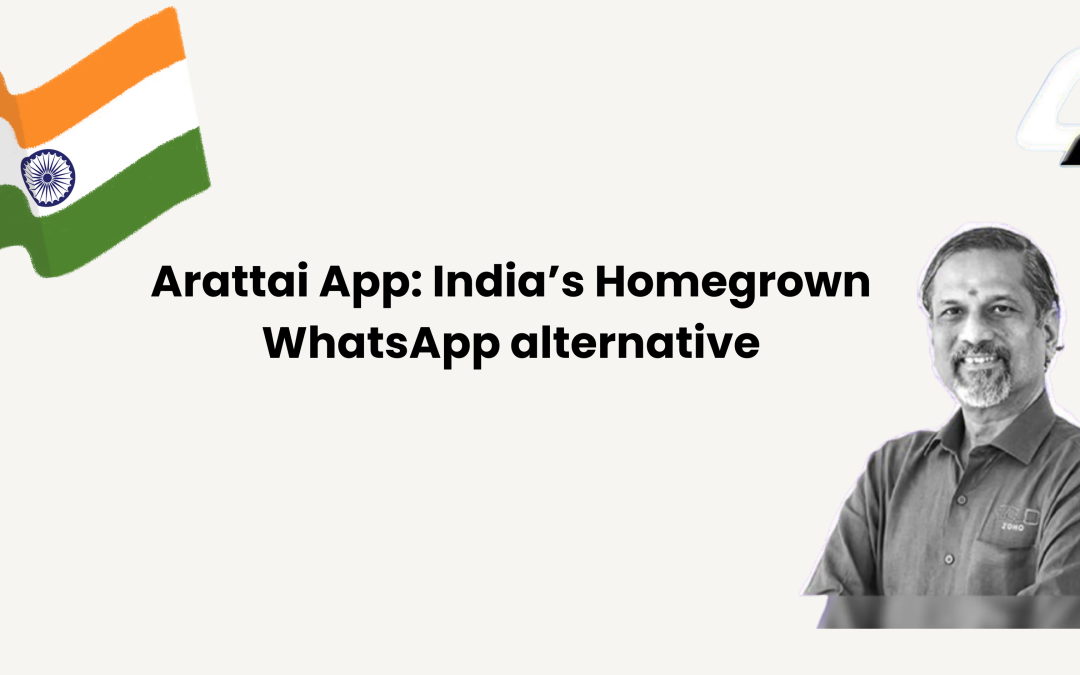
by Shashikanth Heerekar | Oct 11, 2025 | Technology
Discover the Arattai app, India’s homegrown WhatsApp alternative developed by Zoho founder Sridhar Vembu. Learn about its features, rise in popularity, and how this “Made in India” chat app is reshaping the nation’s digital communication.
Introduction
India is witnessing a digital transformation, and one app making big waves is Arattai, a homegrown messaging platform developed by Zoho Corporation. Within a short time, the app has become one of the fastest-growing chat platforms, offering a secure, private, and Indian-built alternative to WhatsApp.
What is Arattai?
True to its name, the word “Arattai” means “chat” in Tamil, and users are interested in whether this name will appeal to non-Tamil speakers. Many appreciate the cultural touch and the idea of promoting Indian languages through technology. It lets users send messages, share photos, videos, and files, make voice and video calls, and even host meetings. Arattai also allows WhatsApp chat migration, and it runs smoothly across multiple devices, including smartphones, desktops, and Android TVs.
Who Created the Arattai App?
Arattai was created by Zoho Corporation, one of India’s leading tech companies. It was developed under the leadership of Sridhar Vembu, the company’s visionary founder, who wanted to give Indian users a secure and privacy-focused chat app made entirely in India.
About Sridhar Vembu—The Visionary Behind Arattai
Sridhar Vembu, born in 1968 in Tamil Nadu, is one of India’s most respected entrepreneurs. He studied at IIT Madras and earned his PhD from Princeton University. In 1996, he co-founded AdventNet, later known as Zoho Corporation, which now serves over 100 million users worldwide.
Vembu is known for his rural innovation model—he operates Zoho from a small village near Tenkasi, where he trains and employs local youth in technology. His mission is to make India self-reliant in software and empower rural communities through education and digital access. In recognition of his work, he received the Padma Shri Award in 2021. Vembu is globally recognized for promoting rural innovation and self-reliant technology in India.
Why is Arattai booming in India?
Arattai’s rise is fueled by a combination of privacy, innovation, and patriotism:
- Privacy First: Arattai ensures end-to-end encrypted voice and video calls, giving users more control over their data.
- Made in India Movement: Users love supporting Indian-made apps that promote digital independence.
- Government Encouragement: Several Indian leaders have urged citizens to use local apps.
- Feature-Rich Experience: It offers group chats, stories, chat migration, and even an Android TV app—something most global apps don’t provide.
- Lightweight & Reliable: It works well on low-end phones and slower networks, making it ideal for Indian conditions.
Key Features of Arattai
- Free text, voice, and video messaging
- Group chats and “Stories”
- “Pocket” feature to save important messages
- “Meetings” for group video calls
- End-to-end encryption for calls
- Seamless use across devices including Android TV
🚀 What Drives Arattai to the Top
🇮🇳 Arattai’s rapid growth is fueled by India’s love for homegrown apps. Built by Zoho, it combines privacy, speed, and simplicity, making it appealing to users across cities and villages. The “Made in India” pride and Sridhar Vembu’s credibility are key factors behind its rising popularity.
🏛️ Ministers who—Unionorted Arattai
- Piyush Goyal—Union Minister for Commerce & Industry—joined Arattai and praised it as a #MadeInIndia product.
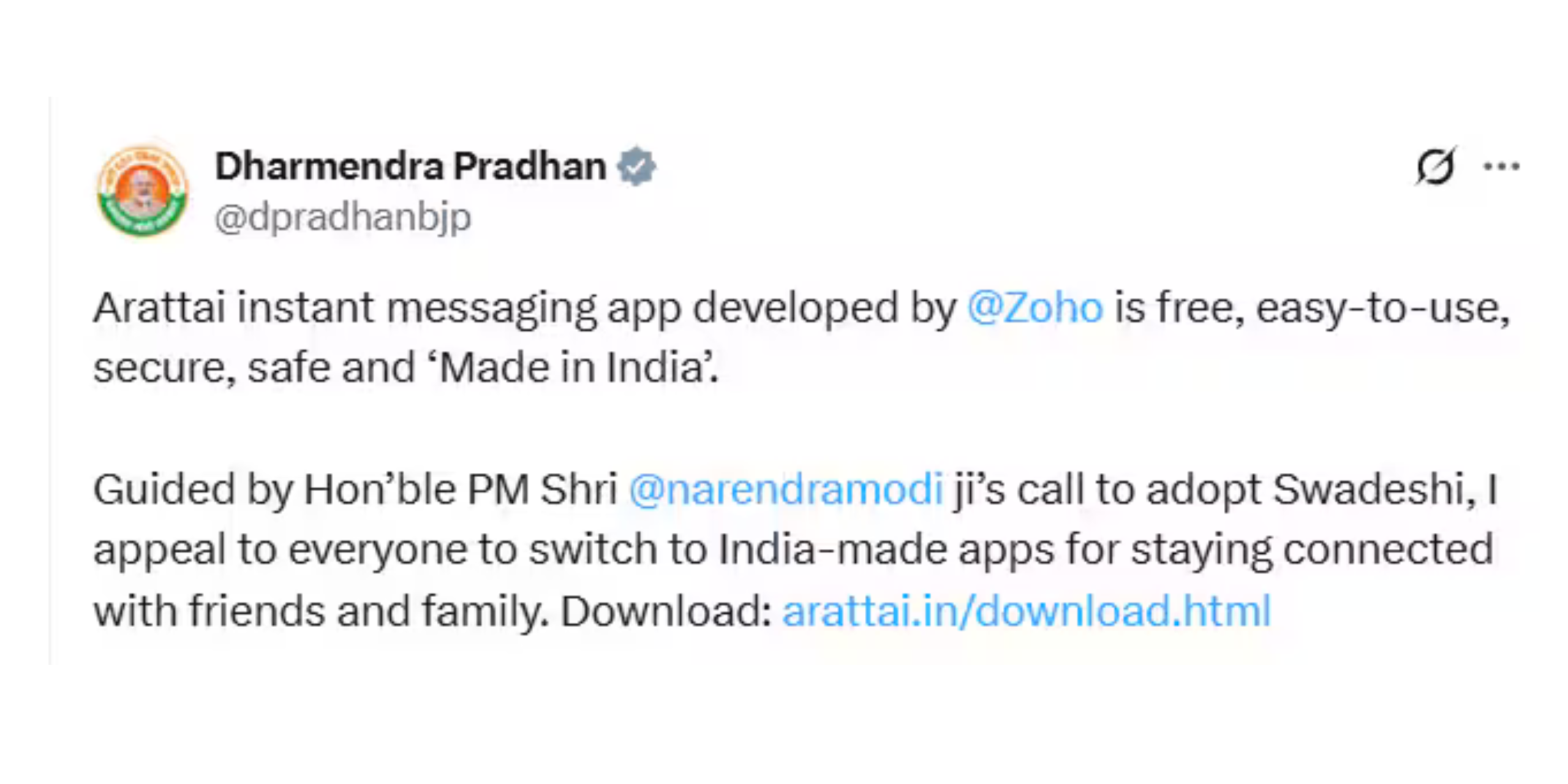
Dharmendra Pradhan tweeted.
- Dharmendra Pradhan—Union Education Minister—encouraged people to use Arattai, calling it “free, easy-to-use, secure, and safe,” and tied it to the Swadeshi (local) movement.
-
- Ashwini Vaishnaw—Minister for Electronics & IT—also endorsed it and switched to Zoho’s office tools, using them in official settings.
- Nirmala Sitharaman—mentioned among ministers endorsing local tech (Zoho’s products, including Arattai) in broader statements about digital sovereignty.
🌟 Famous people / Industry leaders
- Anand Mahindra—businessman/industrialist—publicly said he downloaded the Arattai app and showed support.
- Radhika Gupta—MD & CEO of Edelweiss Mutual Fund—said, “Happy to be a user … a big believer in made-in-India brands.
🌍 No Trump Factor Behind Its Popularity
There’s no international or “Trump factor” promoting Arattai. Its success is entirely driven by Indian users who prefer local, ad-free, and secure platforms. The app’s growth story reflects India’s increasing digital confidence and the public’s support for self-reliant, privacy-focused Indian innovations.
📣 Influencer and Media Promotion
Arattai’s buzz is spreading through tech influencers, YouTubers, and Indian media outlets praising its performance and local roots. Though not a paid campaign, its popularity grows through organic word-of-mouth and social media trends highlighting it as a promising alternative to foreign messaging apps.
💡 Key Factors Influencing Arattai’s Growth
Several factors fuel Arattai’s success: strong data protection, Indian server storage, an ad-free experience, and reliable performance even on slow networks. Its easy interface, focus on user privacy, and patriotic appeal align perfectly with India’s Atmanirbhar Bharat vision, encouraging users to switch from foreign apps.
🇮🇳 Modi’s Vision and the Atmanirbhar Movement
While Prime Minister Narendra Modi hasn’t directly tweeted about Arattai, his “Digital India” and “Atmanirbhar Bharat” initiatives have inspired apps like it. The national call for self-reliance in technology motivates developers like Sridhar Vembu to create secure, world-class apps proudly made in India.
📈 Arattai Crosses 7.5 Million Downloads in India
According to The Economic Times, the Arattai app has surpassed 7.5 million downloads across Google Play and the Apple App Store as of October 2025. Backed by Zoho, the app’s growth reflects India’s strong support for homegrown technology and rising trust in privacy-focused, made-in-India communication platforms.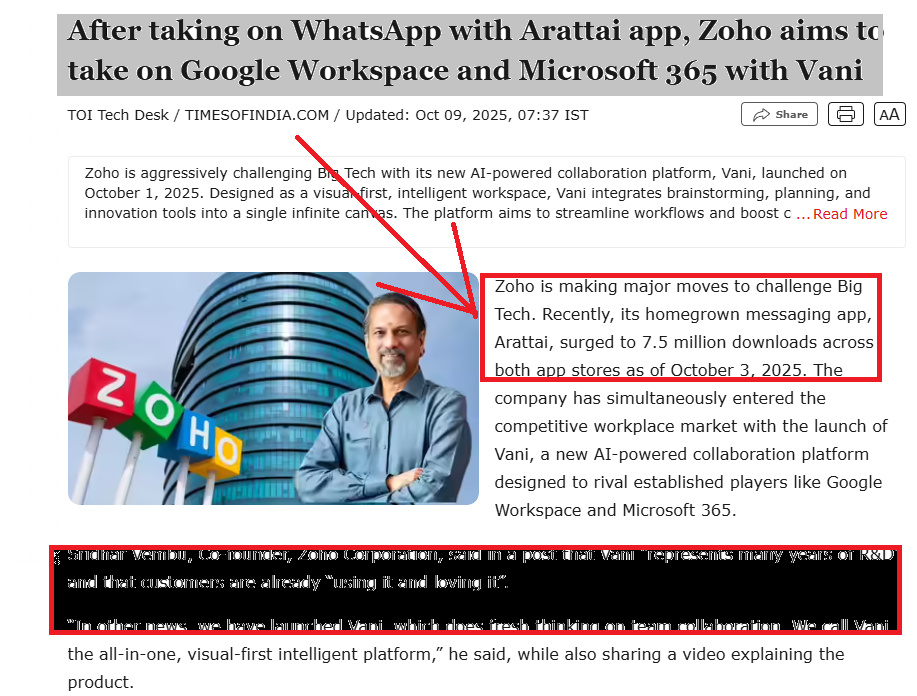
latest user interest and trending technology. out the Arattai app
🔒 Privacy and Security Concerns
Many users are curious whether Arattai offers end-to-end encryption like WhatsApp and Signal. Currently, it supports secure messaging but lacks full encryption for all chat types. However, Zoho has confirmed that enhanced privacy features are under development.
📱 Comparison with WhatsApp
People often search “Arattai vs WhatsApp” to know which is better. Arattai offers multi-device login, group chats, and file sharing, but users note it still lacks a few advanced tools that WhatsApp provides. The app is improving with each update and focuses on simplicity and privacy.
💰 Free and Ad-Free Experience
A big attraction is that Arattai is completely free and ad-free. Users appreciate that the app doesn’t collect or sell personal data, making it a trusted choice for those who want a clean, private chatting experience.
🌐 Performance in Rural Areas
Because Arattai is built by Zoho—a company deeply connected to India’s rural ecosystem—users report that it performs smoothly on slow internet and low-end phones. This gives it an advantage in rural and semi-urban regions.
“Made in India” Factor
Searches around “Arattai made in India app” are trending. People love that it’s developed entirely in India by Zoho Corporation, aligning with the Atmanirbhar Bharat (self-reliant India) movement. This patriotic connection boosts user interest and trust.
⚙️ Missing Features
Some users want to know what Arattai lacks compared to WhatsApp—for example, business tools, backup options, and advanced encryption. However, Zoho’s team has hinted that these features will be added gradually.
🧠 User Trust and Adoption
People are curious whether Arattai can retain users after the initial excitement. It’s gaining loyal followers who prefer privacy and simplicity over fancy features. Trust in Sridhar Vembu’s brand ethics helps sustain its popularity.
🗄️ Data Location and Security
Users often ask where Arattai stores their data. The company has confirmed that all servers are based in India, ensuring compliance with national data protection standards and giving users more control over their digital privacy.
Challenges and Future Outlook
Arattai faces stiff competition from global giants like WhatsApp, Telegram, and Signal. While it’s growing rapidly, it must continue improving features and security to maintain user trust. However, its quick rise shows that Indians are eager for apps built in India, for India.
Conclusion
Arattai is more than just a chat app—it’s a symbol of India’s growing technological confidence and independence. Led by Sridhar Vembu’s vision and powered by Zoho’s innovation, Arattai proves that India can create secure, reliable, and world-class digital products. Whether it replaces WhatsApp or not, Arattai has already started a new chapter in India’s digital journey.
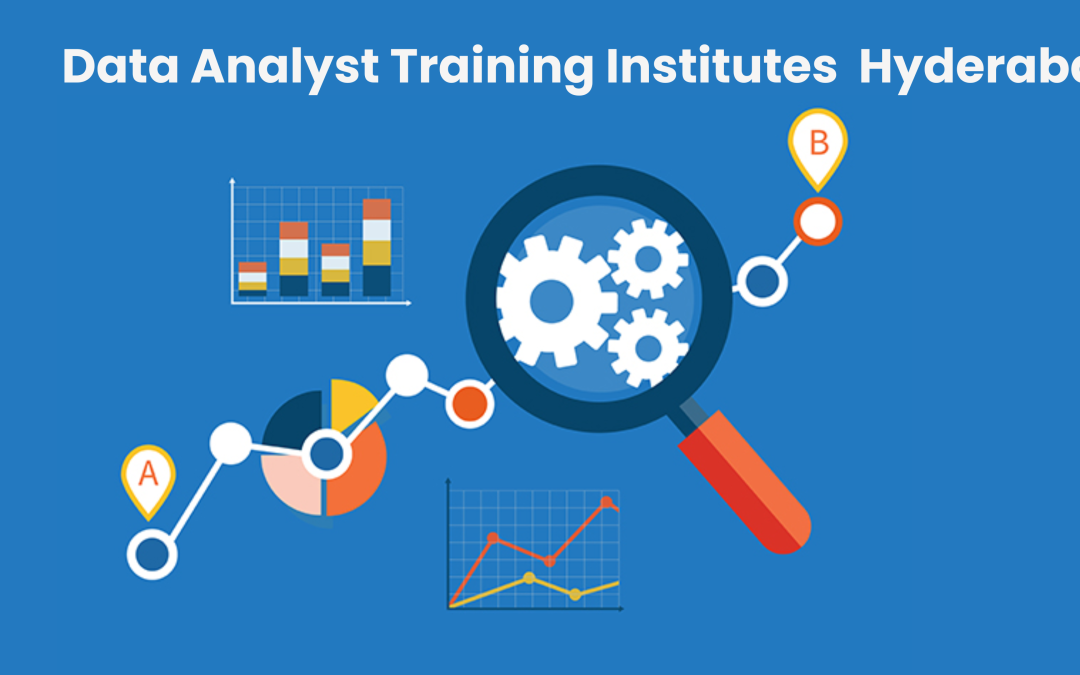
by Shashikanth Heerekar | Jun 24, 2025 | Technology
Find the best Data Analyst training institutes in Hyderabad with expert faculty, real-time projects, and 100% placement support in 2025.
Introduction
In 2025, are you searching for a satisfactory records analyst schooling institute in Hyderabad? You’re inside the proper region! Hyderabad has become a top destination for students, freshers, and operating specialists who want to build a career in information. With increasing demand in tech and commercial enterprises, studying information analytics can open many doorways.
Many options exist, from facts analytics guides in Hyderabad with placements to applications through top names like Digital Vidya, IIT, and Besant Technologies. You’ll discover a suit Whether you’re seeking a quick direction, an IIT analytics path online, or hands-on training in areas like Ameerpet.
This article covers the top statistics analyst direction institutes presenting actual-time initiatives, expert-led schooling, and location guides. Whether you need to improve your skills or begin sparkling, those programs in Hyderabad allow you to develop inside the world of facts.
WhiteScholars
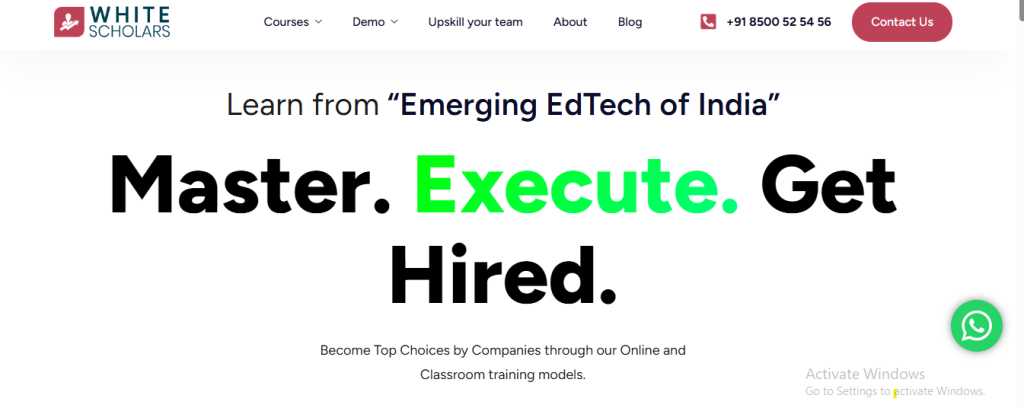
WhiteScholars Academy, established in 2021 and based in Kukatpally, Hyderabad, is a top choice for learning data analytics, data science, and digital marketing. They offer both online and classroom training with a focus on real-time projects, beginner-friendly teaching, and placement support.
Students benefit from resume building, mock interviews, and virtual internships with top companies like Microsoft, Meta, and PwC. With expert trainers and small batch sizes, WhiteScholars is ideal for freshers and professionals looking to upgrade their careers.
Location: Kukatpally, Hyderabad
Courses Offered
- Data Science
- Digital Marketing
- Data Analytics
Contact Details
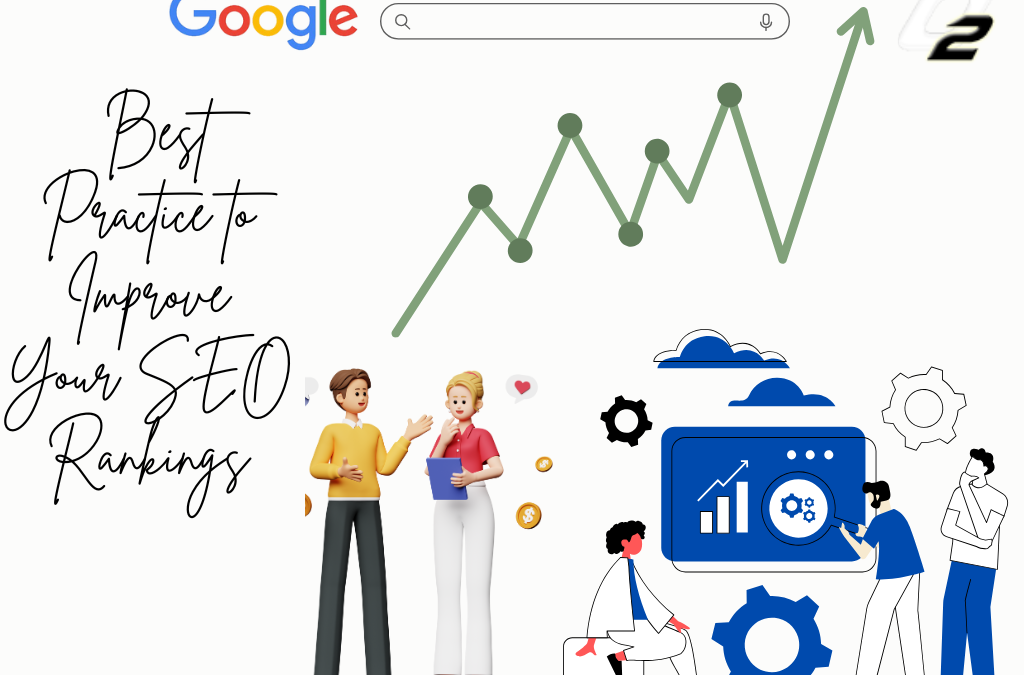
by Shashikanth Heerekar | May 12, 2025 | SEO News, Technology
10 Powerful Ways to Improve SEO Rankings and Drive More Conversions is your ultimate guide to results-focused strategies. Learn actionable methods to attract targeted traffic, increase authority, and convert visitors into loyal customers.
Why is there a need for SEO practices to improve ranking?
Want to get your website seen by more people and turn those visitors into customers? Then this is the ultimate guide for you. “10 Powerful Ways to Improve SEO Rankings and Drive More Conversions” gives you simple steps to do just that.
Let’s assume your shop is on the busiest street in the market, so more people will walk in and buy what you’re selling.
In the same way, Google (search engines) is also a type of market where many sellers (websites) sell their services or products. This search engine, like Google, will bring the right people your way.

These aren’t complicated tricks, but solid ways to make your website stand out. For example, if you sell handmade jewelry, we’ll talk about using the right words so people searching for “unique silver earrings” “latest necklace” “best earings to gift your loved ones“ this kind of keywords are often used according to the search intent of the users, so making sure using right keywords in the artcile can influence your google ranking.
By following the ten powerful methods below, you’ll not only see your website climb higher in search results but also attract visitors who are interested in what you have.
As a full-time content writer, I followed these rules, which have improved my ranking in Google top searches with full-proof images too.
This means more clicks, more engagement, and ultimately, more sales. It’s all about getting the right traffic and turning those visitors into happy, paying customers.
10 Powerful Ways to Improve SEO Rankings and Drive More Conversions
1. High-Quality, Comprehensive Content
According to my view, Great content is the backbone of any blog post to rank on search engine. Your content must be detailed, easy to understand, and better than what’s already ranking.
Make sure your article is not AI generated, it should be fully human written article and mostly try to add your own experiences or your knowledge while writting an article.
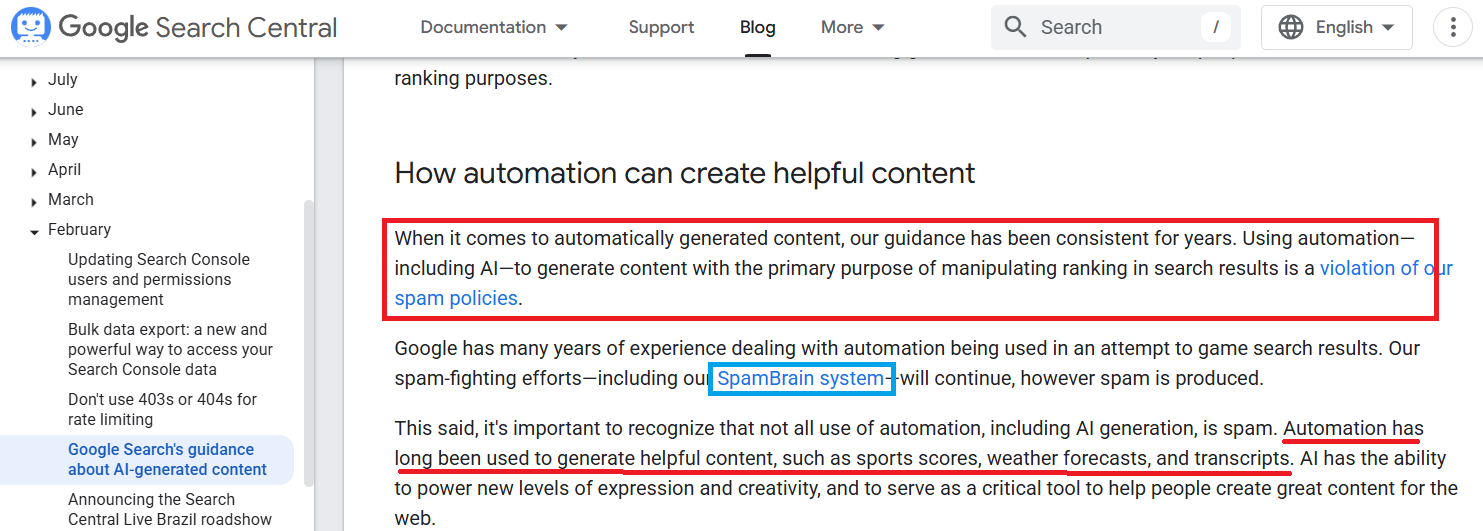
It has a greater impact on searches. Also, I recommend that you revise or update your content every 6 months, providing users with the latest information in your blog posts.
It also indirectly retains your old users to your blog post.
Answer all potential questions users may have about a topic in one place. For example, if you’re writing about “SEO best practices for content,“ include keyword tips, examples, and tools.
Google rewards pages that provide value and depth. Quality content helps build authority and trust, which are key parts of SEO success.
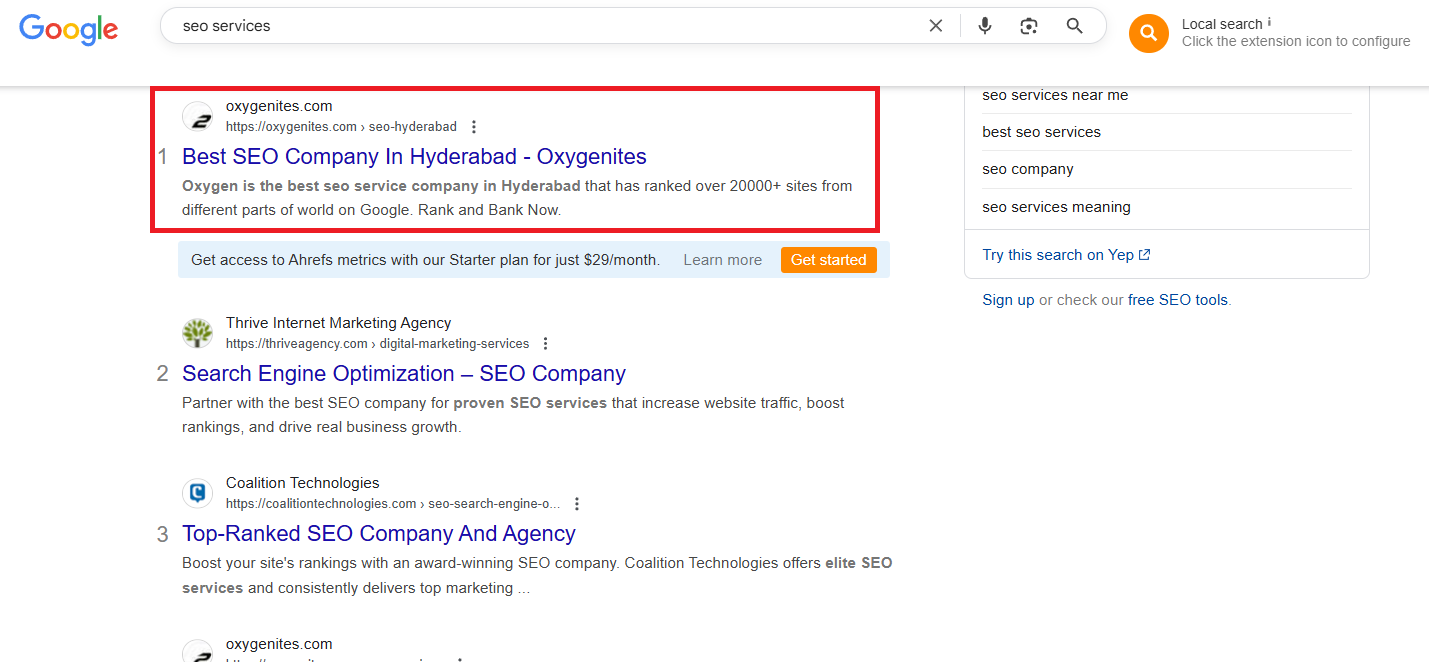
Note : seo services keywords is ranking because of good keyword and good content.
2. Prioritise User Intent
To improve your SEO rankings, you must understand what users are really looking for. User intent refers to the goal a person has when typing a query in Google.
For example, someone searching “best laptop for students“ here his intent to gain knowledge and he is looking for laptop which are sutiable for students. In this blog the user is looking for simple blog but not interested in the “evolution of laptop“.
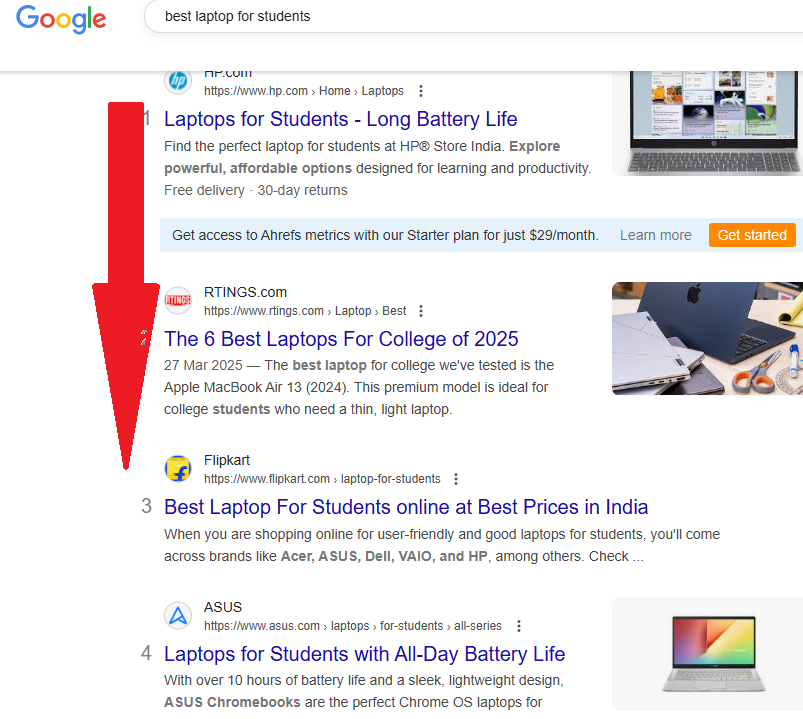
Align your content with what people actually want. Use tools like Google Search, AnswerThePublic, and forums to learn what users expect.
Use or include those keywords that are actually the intent of the users. For example, if the user is having a commercial intent, then their query will be “best laptop under $500.” The searches will be different. Below is the image showing the same.
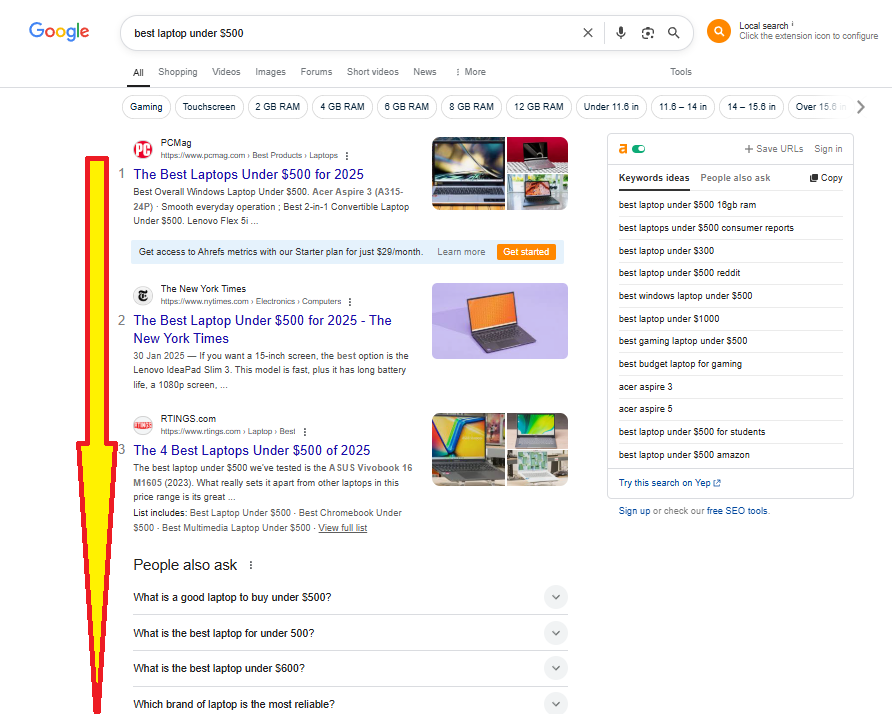
3. Embrace AI and Automation
In the above phrase i have mentioned not to write AI generated article, which i seriously support but here my context is different, copy pasting exaclty what AI has generated is totally wrong, which leads to spam and also plagarsim.
Here what iam trying to expalin you that the below mention tools are here to assist you in providing latest information in any feild. This automation tools will also provide you information from any external source, by adding the same infromaition in the your article leads to spam and plagarsim, which search engines does not support.
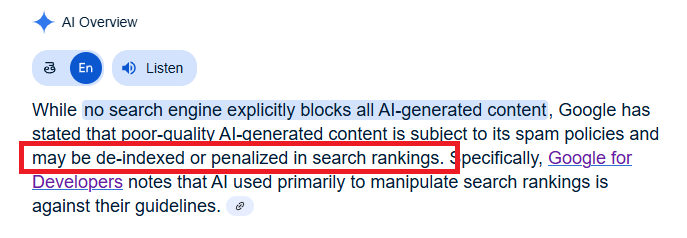
AI tools like ChatGPT, Jasper, Gemini, SurferSEO etc can help you improve your content quality, helping in adding relevant keywords ideas, providing latest update regarding the topic which you are interested to write, it also helps to provide latest stacts which can be beneficial.
I mostly use chatgpt, gemini for knowing latest information according to my topic and later i will delivery article in my own context.
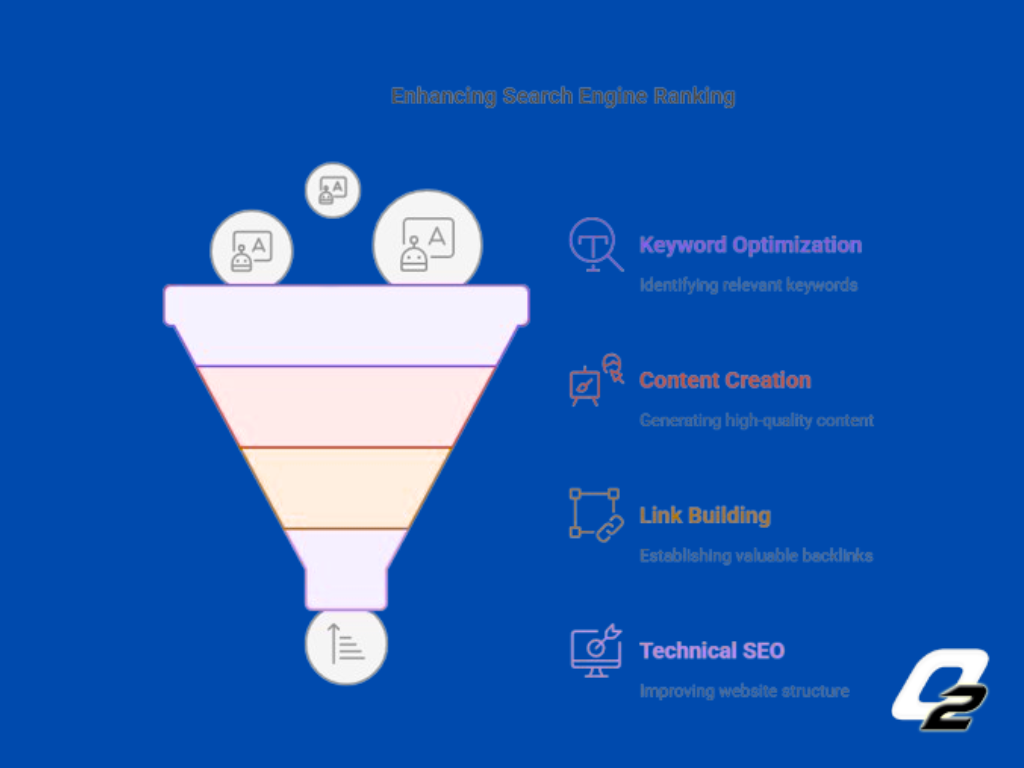
4. Focus on E-E-A-T
E-E-A-T stands for Experience, Expertise, Authoritativeness, and Trustworthiness. These are key principles Google uses to assess your site’s quality.
If you’re writing health content, readers want to know you’re qualified. Add author bios, cite credible sources, and update content regularly. This helps meet Google SEO best practices. For example, a financial blog with advice written by certified professionals will rank better than anonymous sources.
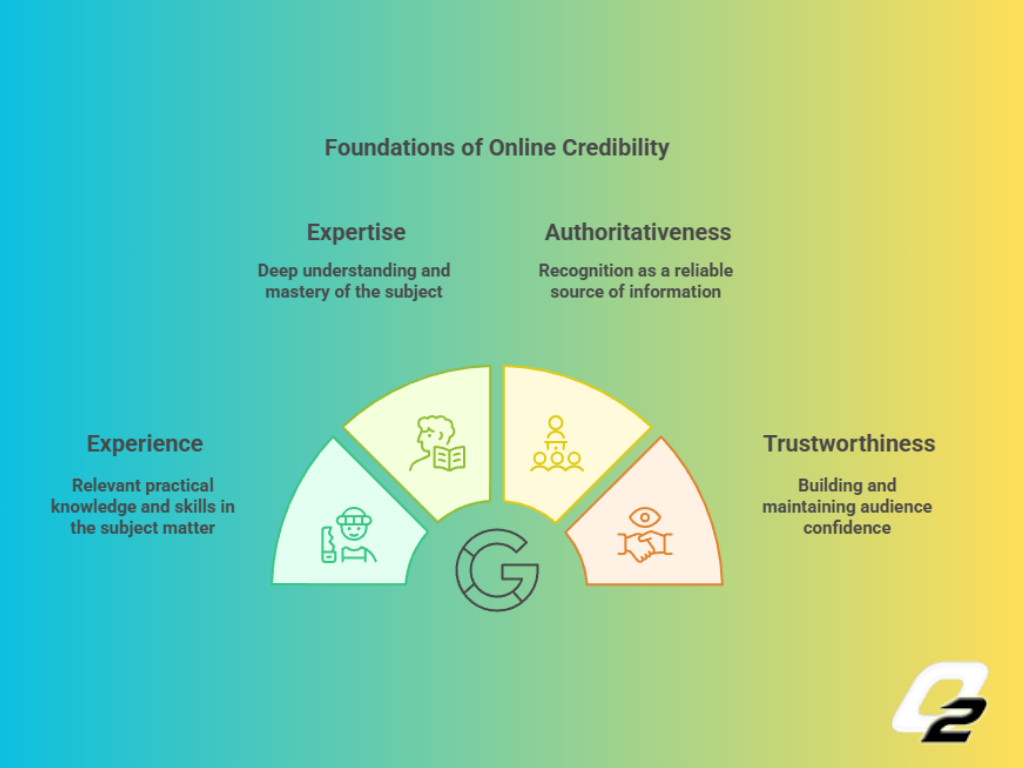
E-E-A-T strongly emphasizes content created by individuals with significant real-world experience in a specific field.
For instance, in the medical field, a blog written by someone with direct medical experience and expertise will naturally possess authority on the subject. Because the content is relevant and backed by genuine experience, search engines are more likely to recognize its trustworthiness and value it accordingly.
If you are interested in learn more about EEAT, visit this link – EEAT
5. Optimize for Mobile-First Indexing
Imagine you’re a movie director. Now you have two versions of the set: a grand, elaborate stage designed for a wide movie screen, and a smaller, more streamlined set built for a smartphone screen.
Nowadays, most of your audience is watching the movie on their phones, so you decide to emphasize the first smartphone set. You’ll make sure that the set looks fantastic, is easy to navigate, and has all the important elements visible on the smaller screen.
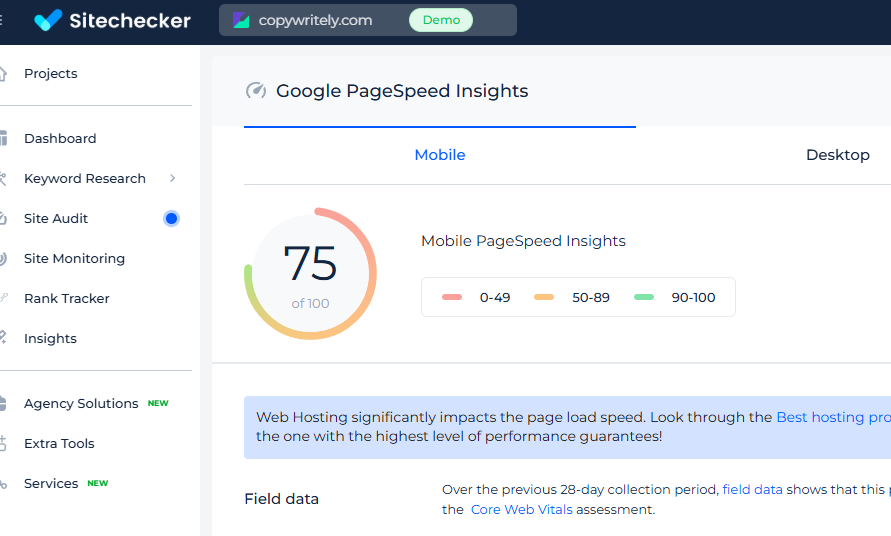
Even if your big stage set is amazing, if the smartphone set is disorganized or missing key features, your audience watching on their phones will have a poor experience or may not be interested in staying due to technical issues. And since most people are watching on phones, that matters most.
Optimization Tips in this new analogy:
- Responsive Design: Try maintaining a layout, size, and design that fits the big and small screens without losing key details.
- Speed Loading: If it takes too long for the scene to appear on their phone, they might get impatient and stop watching. Optimizing images and pages that load quickly on mobile can be clicked.
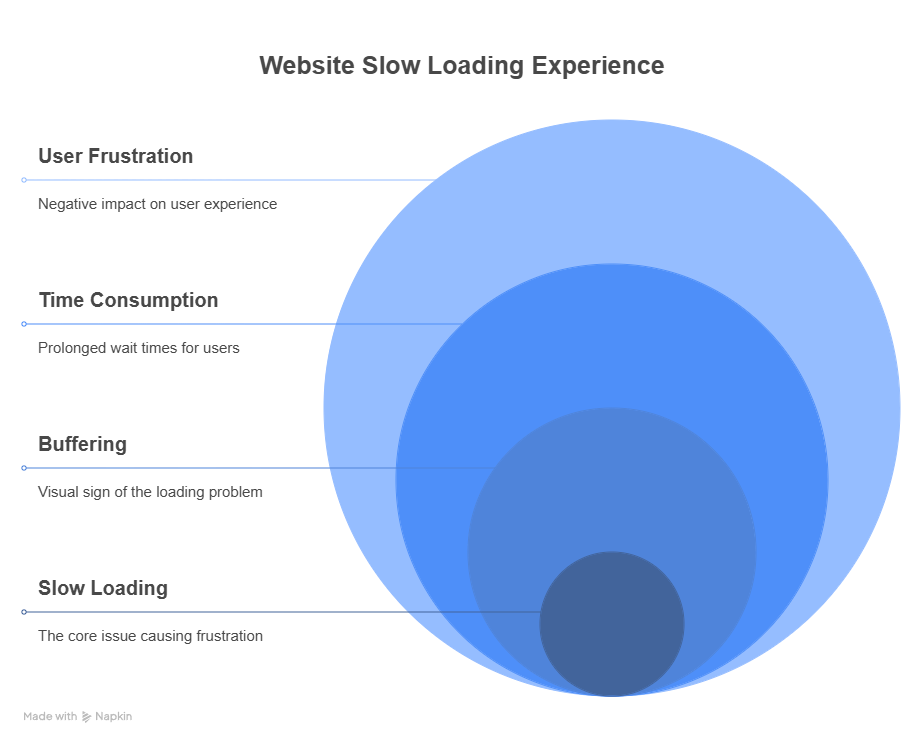
6. Improve User Experience (UX)
User experience impacts SEO rankings. A clean design, fast loading time, easy navigation, and clear CTAs (calls to action) encourage visitors to stay longer.
Let’s assume, if you are visiting online cloth website and it is taking much time to open and and the images which of clothes are not very clear and does not have “add to cart “button or “shop now“ or “Buy now “option then the user won’t stay on that webstie, he will switch to other store (website) soon.
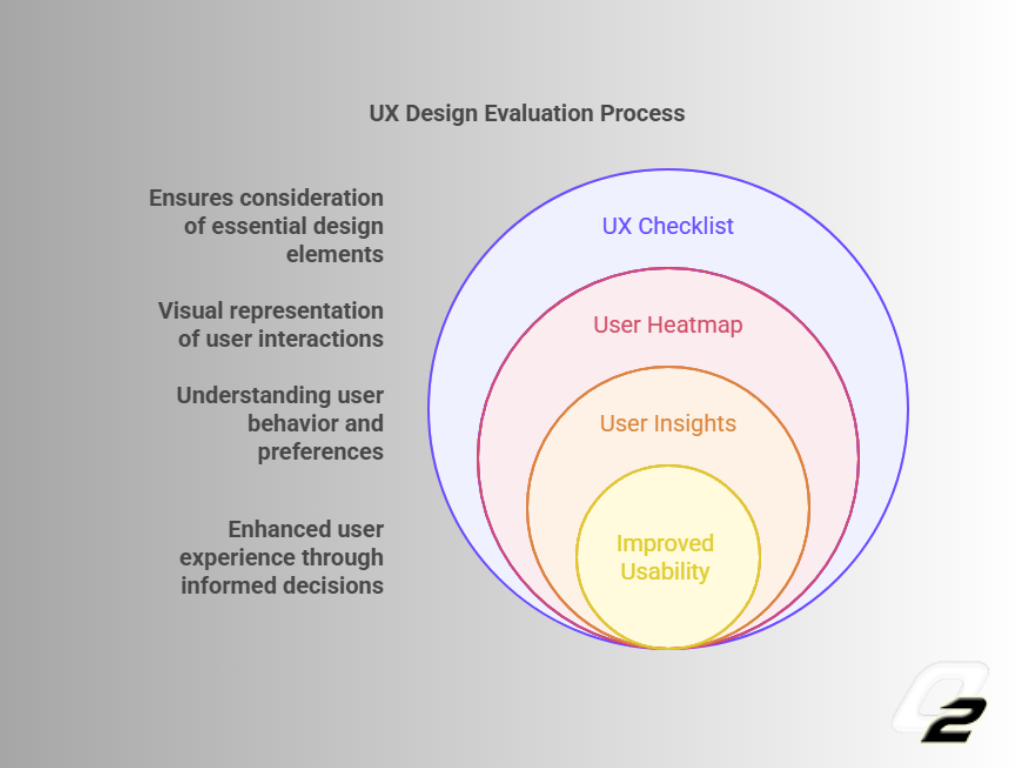
So, it is very important to maintain a website in a proper manner and provide users a good experience and Google notices.
Use tools like Core Web Vitals and GTmetrix to analyze UX metrics. A better experience leads to lower bounce rates, higher engagement, and better rankings—hallmarks of best website SEO.
7. Build Authoritative Backlinks
Okay, let’s talk about “Backlinks and Link Building“ and why they’re a big deal for how high your website appears in Google search results. Think of it like this:
Imagine different websites are like people, and a backlink is like someone recommending another person.
Why are backlinks so important for Search Engine Ranking?
Think of it as Google trying to figure out which websites are the most popular and trustworthy sources of information on a particular topic. If many other credible websites are linking to yours, it’s like many people are saying, “This website knows what it’s talking about!” ‘
This tells Google that your website is likely a good resource and deserves to rank higher in the search results.That’s why understanding and applying the right link building tips is crucial—because it’s not just about getting links, but getting the right kind of links from trusted sources.
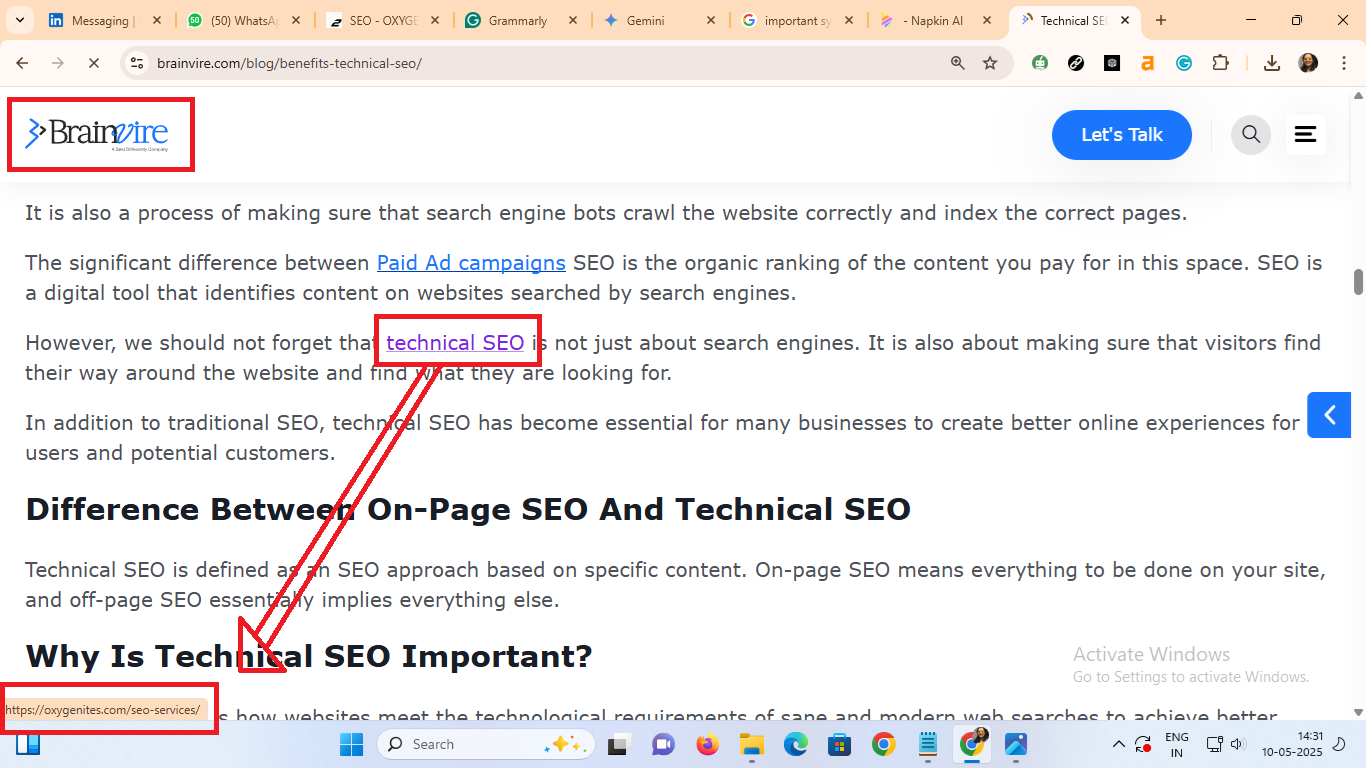
NOTE: Getting backlinks from high-quality and relevant websites is like getting strong recommendations. Strong recommandation will have good impact on search engines.
8. Simplify Your URLS for Better SEO
A well-structured website facilitates better crawling and indexing by search engines. Let’s explain technical SEO and site architecture using a completely different image.
Imagine Google is like a delivery company trying to pick up and deliver packages (your web pages) to people all over the world.
Simple Example:
Think of a big news website. They publish many articles every day. If their website has a clear URL structure (like www.xyznews.com/sports/football/todays-match) and an updated sitemap that tells Google about each new article, it’s much easier for Google to find and index all their stories quickly so people can see them in search results.

In short, Technical SEO and site Architecture are very important for any website to provide users a proper guide to visit which category or the user is looking for, which subject he is interested in.

9. Optimize for Voice and Visual Search
Voice search optimization is now a days trending, most of the website have enable this feature in their website like voice search optimization and voice assistants.
Voice search offers hands-free convenience, especially while driving or cooking. It provides quick answers and streamlines information retrieval, making multitasking easier.
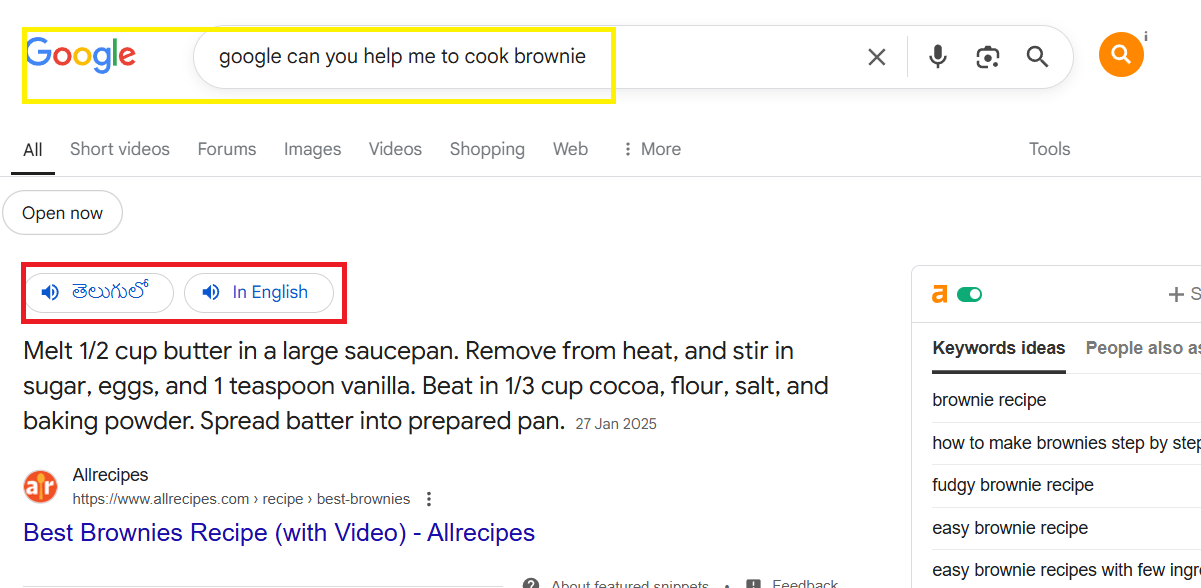
Many updated Divi theme provide this features, you can enable them.
Setting up voice search on your site is usually quick and requires just a few simple adjustments, and then it’s ready for voice commands!
10. Stay Agile with Algorithm Updates
Google updates its algorithms very often, affecting how sites rank. It’s very important to stay updated with google core updates, because following this google algorithm we can stay on top google searches.
It’s vital to stay current by following industry blogs like Search Engine Journal or Moz. If your rankings drop, check tools like Google Search Console to identify issues. Implementing best practices for SEO means being adaptable. Focus on content quality, user experience, and site health to stay ahead. Don’t chase every change—stick to long-term good SEO strategies that align with Google’s core values.
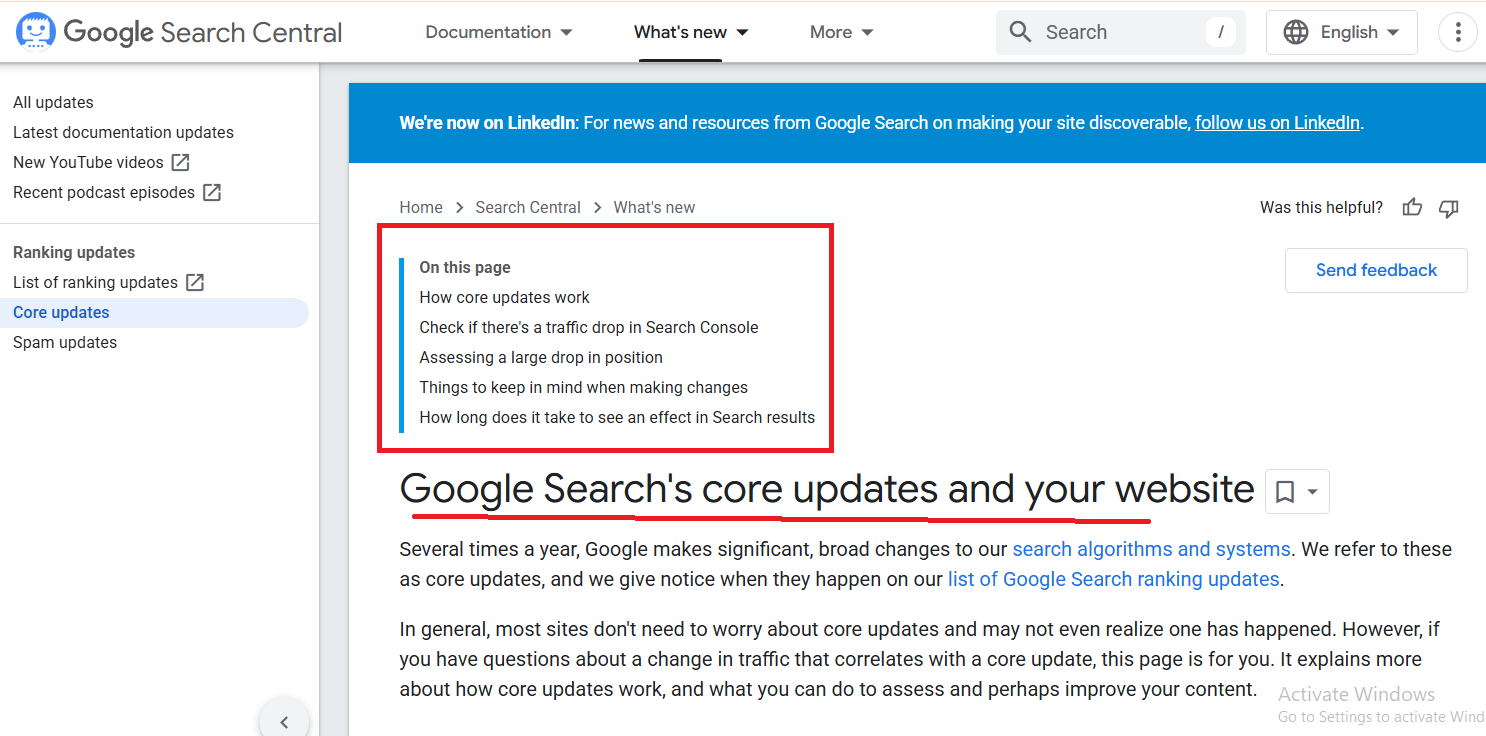
✅ Conclusion
Scaling your SEO rankings needs continously effort and smart ideas. By following above 10 best practices—like focusing on user intent, improving content quality, and staying updated and many more as mentioned above—you’ll not only boost your visibility but also attract the right audience. This is my personal experience which i have tired in my blog writtings. Remember, SEO isn’t just about ranking at once but also staying on that position in long term.



































